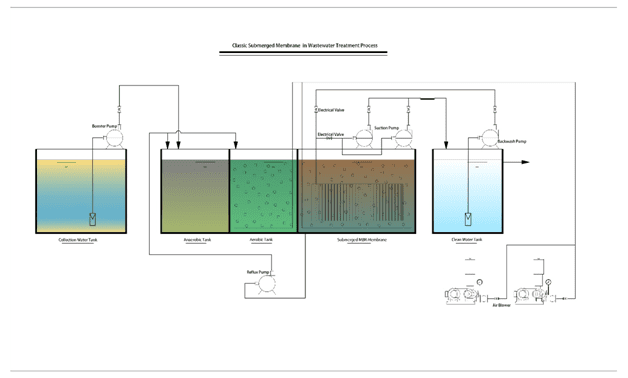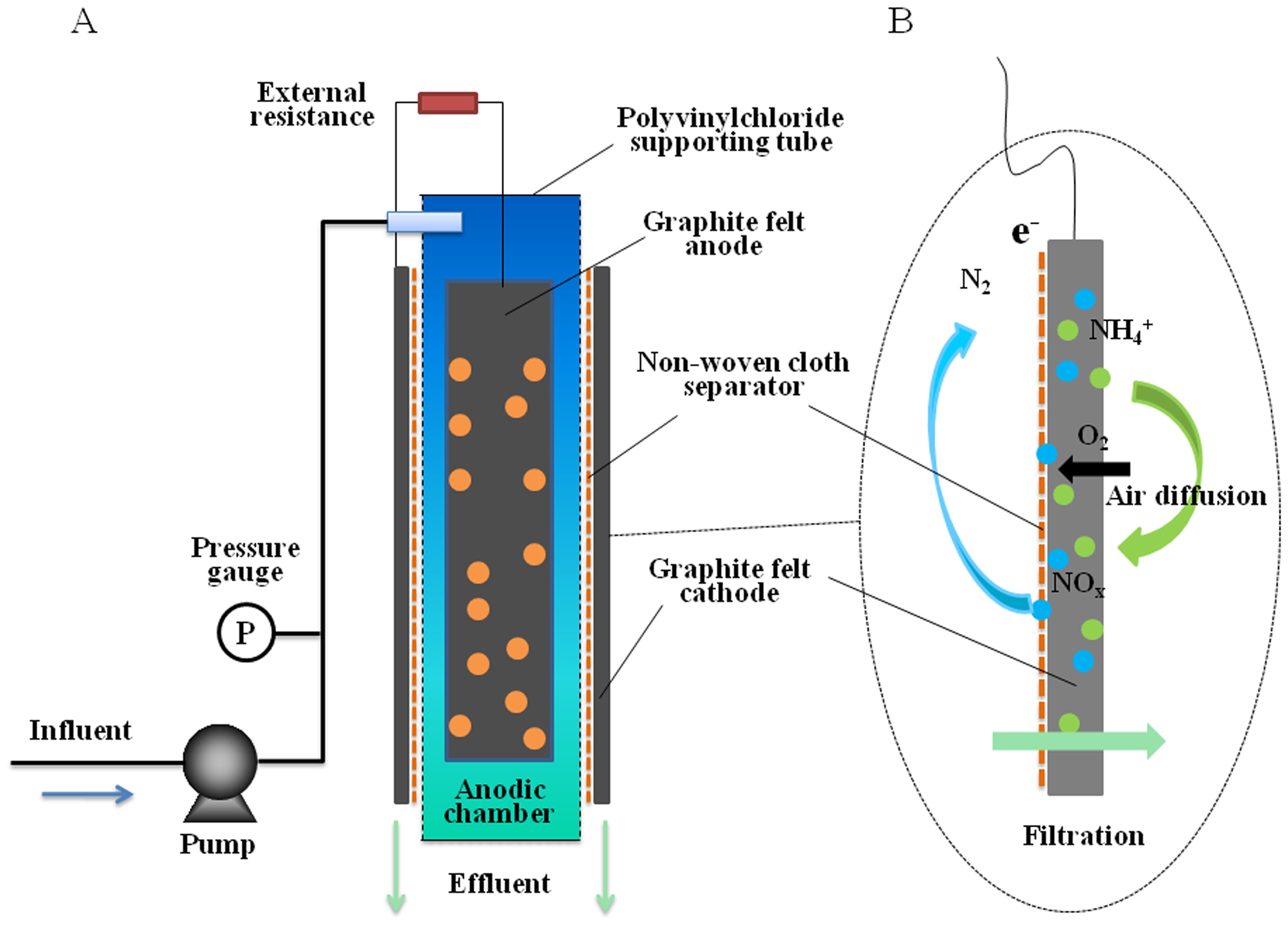How Membrane Bioreactor Can Improve the Quality of Wastewater Treatment
How Membrane Bioreactor Can Improve the Quality of Wastewater Treatment
Blog Article
How Membrane Layer Bioreactors Are Transforming Water Filtration Systems
The appearance of membrane bioreactors (MBRs) stands for a considerable innovation in the field of water filtration, merging organic therapy processes with cutting-edge membrane filtering technologies. This integration not just boosts the top quality of dealt with effluent however additionally addresses city area restrictions, making MBRs specifically suitable for largely booming areas. As worldwide water deficiency heightens, the duty of MBRs in helping with drinkable water reuse and lasting water management ends up being significantly critical. The implications of this innovation prolong past performance-- what opportunities and challenges lie ahead for its extensive application?
Review of Membrane Layer Bioreactors
Membrane layer bioreactors (MBRs) represent a significant development in water purification modern technology, as they incorporate organic treatment processes with membrane layer purification. This combination improves the efficiency of wastewater therapy by making use of bacteria to deteriorate organic toxins while all at once utilizing semi-permeable membranes to separate cured water from suspended solids and pathogens.
The MBR system normally consists of an organic activator where the microbial population metabolizes pollutants, followed by a membrane layer filtering unit that preserves biomass and enables only tidy water to go through. This dual performance results in greater effluent high quality contrasted to traditional treatment approaches. MBRs can be operated in both batch and continuous circulation modes, supplying versatility in design and application.
They likewise enable the recovery of water for reuse, hence adding to water sustainability efforts. In general, MBRs are at the forefront of boosting water therapy efficiency and quality, showcasing the possibility for ingenious solutions in ecological monitoring.
Advantages of MBR Innovation
The combination of organic therapy with membrane layer filtration uses countless advantages for water purification processes. One of the main benefits of Membrane Bioreactor (MBR) modern technology is its capacity to effectively remove both not natural and natural contaminants, resulting in top notch effluent. The membrane layers act as a physical obstacle, avoiding suspended solids and virus from passing through, which boosts the general safety and security and reliability of cured water.
In addition, MBR systems need a smaller sized impact contrasted to traditional treatment techniques, permitting a lot more effective area usage. This compact layout is specifically helpful in metropolitan settings where land is limited. MBRs additionally show operational flexibility, suiting differing influent qualities and circulation prices without considerable performance destruction.
Moreover, the process offers boosted nutrient removal capabilities, specifically for nitrogen and phosphorus, which are important for avoiding eutrophication in receiving waters. The lowered sludge production connected with MBR modern technology likewise translates to reduce disposal costs, making it a cost-effective remedy in the long run - Membrane Bioreactor. Overall, the benefits of MBR technology placement it as a leading choice for cutting-edge and sustainable water filtration systems, dealing with both ecological and economic problems
Applications in Water Purification
Applications of Membrane Layer Bioreactor (MBR) technology in water purification are varied and impactful, resolving various therapy requires across several sectors. MBRs successfully incorporate biological therapy procedures with membrane filtering, making them ideal for community wastewater therapy, industrial effluent administration, and also safe and clean water reuse initiatives.
In metropolitan setups, MBRs are increasingly utilized to improve the high quality of dealt with wastewater, permitting conformity with stringent discharge regulations and facilitating the recycling of water for irrigation and non-potable uses. Their portable style likewise makes them appropriate for metropolitan settings where room is restricted.
Industrially, MBR modern technology is made use of to deal with procedure water and wastewater, specifically in fields such as food and drink, drugs, and fabrics. By properly eliminating contaminants and suspended solids, MBRs help industries minimize ecological influences while recouping beneficial sources from wastewater streams.
Additionally, MBRs are getting traction in decentralized water recommended you read treatment applications, where small-scale systems can be released in remote locations or establishing regions. This adaptability enables areas to attain lasting water administration solutions, enhancing accessibility to tidy water while decreasing reliance on traditional therapy techniques.
Study and Success Stories

In another instance, a textile production center in Bangladesh adopted MBR modern technology to address its wastewater obstacles. The system minimized chemical oxygen demand (COD) degrees from 1,200 mg/L to less than 100 mg/L, hence meeting governing requirements and significantly lessening environmental influence.
The University of Cape Town's MBR installment has confirmed efficient in dealing with greywater for non-potable reuse on campus. This task not only saves potable water however additionally acts as an instructional model for lasting practices.
Moreover, a seafood processing plant in Norway made use of MBR technology to deal with effluents having high levels of natural issue, accomplishing over 90% toxin elimination. These case research studies emphasize MBR innovation's adaptability and its vital function in boosting water top quality across diverse applications.
Future of Water Therapy Solutions
As international water deficiency and pollution difficulties escalate, innovative water treatment options are weblink coming to be increasingly vital to make sure lasting accessibility to tidy water. The future of water treatment hinges on the combination of sophisticated modern technologies that boost the efficiency and effectiveness of purification processes. Membrane bioreactors (MBRs) are at the forefront of this evolution, integrating biological treatment with membrane filtering to create premium effluent appropriate for different applications.

Emerging trends such as resource recuperation from wastewater, consisting of nutrients and power, will certainly even more transform treatment centers right into green centers. Advancements in nanotechnology and membrane layer materials promise boosted efficiency and durability of filtration systems.

Conclusion
Their duty in potable water reuse and lasting water monitoring highlights their significance in attending to international water scarcity difficulties. Proceeded research and development will better enhance the efficacy and adoption of MBR innovation, making certain a resilient future for water treatment options.
The appearance of membrane layer bioreactors (MBRs) represents a significant development in the area of water filtration, combining organic therapy procedures with cutting-edge membrane filtration innovations. As worldwide water shortage intensifies, the role of MBRs in helping with drinkable water reuse and sustainable water administration ends up being progressively important. They additionally make it possible for the recuperation of water for reuse, hence adding to water sustainability campaigns.As international water deficiency and contamination difficulties increase, ingenious water therapy options are ending up being progressively vital to guarantee sustainable access to clean water. Their role in potable water reuse and lasting water monitoring highlights their relevance in attending to useful site worldwide water shortage difficulties.
Report this page